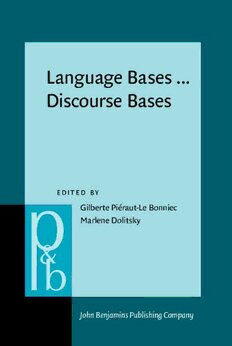
Language Bases... Discourse Bases: Some Aspects of Contemporary French-language Psycholinguistics Research PDF
348 Pages·1991·11.175 MB·
Most books are stored in the elastic cloud where traffic is expensive. For this reason, we have a limit on daily download.
Preview Language Bases... Discourse Bases: Some Aspects of Contemporary French-language Psycholinguistics Research
Description:
When child language began to be studied in the sixties, what interested researchers most was what could be considered language per se. Holophrases were excluded as seemingly having no syntax and research work was carried out as of the two-word stage. Language development was studied up to around age seven, the age at which natural acquisition processes were considered to be contaminated by formal schooling in language. In opposition to such an attitude, this volume has ignored this heavily studied area of language development preferring to present research being carried out at the two ends of the development process that had been rejected: that of prelinguistic speech skills, at the one end, and the development of discourse at the other. This book thus begins with the physical properties in human development necessary for language to occur. It also offers studies on a child's initial equipment, i.e. intra-uterine skills and skills acquired before first words. At the other end, are studies on the development of discourse, i.e. the child's acquisition of the ability not only to juxtapose ideas, but to link them, skills that are not fully acquired until the child is well into adolescence and nearing adulthood.
See more
The list of books you might like
Most books are stored in the elastic cloud where traffic is expensive. For this reason, we have a limit on daily download.
